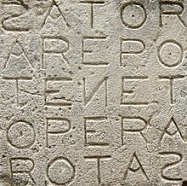Palindromes
in Matlab - working with indices
Palindromes
are phrases, words, numbers or other sequences of characters
that can be read the same way in either direction.
|
In programming, they
are
used to learn to work
with indices in a vector or an ascii string, so...
there
are many students with homeworks like this:
How
do I create this in Matlab? I need to create a program that reads 5
digit integers and detects if it's a palindrome or not. |
We can approach the problem in a number of ways, but let’s keep this
solution
simple. Since we are receiving the digits one-by-one, I propose to use
a string
input. Then, we utilize the buil-in function ‘num2str’ to
transform the
iteration number and include or concatenate that index in the string to
be displayed to the
user.

To find
an answer, I propose this naive code.
%
I use these instructions to reset screen and memory
clear,
clc
%
We iterate five times
for i = 1 :
5
% Let's ask the user to enter
digits one-by-one
str = ['Give me digit number '
num2str(i) ':
'];
s(i)
= input(str,'s');
% and we reverse the digits,
starting by the end
p(6 - i) = s(i);
end
%
Compare the entered string with the reversed one
if s == p
% and answer accordingly
disp ('WOW! Those digits happen
to be a
palindrome!')
else
disp ('They are NOT a
palindrome,
sorry...')
end
On the other hand,
there’s a function named ‘fliplr’
that exactly flips
the array or matrix in left/right direction. We could have this
slightly simplified
code instead:
%
We loop five times
for i = 1 :
5
% Let's
input the digits
s(i) =
input(['Give
me digit number ' num2str(i) ':
'],'s');
end
%
Compare the entered string with the reversed one
if s ==
fliplr(s)
% and answer accordingly
disp ('Way to go! Those digits
are a
palindrome!')
else
disp ('Nope, unfortunately
they’re not,
sorry...')
end
From 'Palindromes ' to home
From 'Palindromes
' to Matlab Examples
Credits:
M Disdero, CC BY-SA 3.0, via Wikimedia Commons

|
|



